they open. one by one. night after night.
this particular epi only stays open for 24 hours. then those many serrated petals close in on themselves.
collapse.
you have to wonder about the utility of such a plant. the scientific hemisphere of my brain wants to know WHY.
but the poetic hemisphere just wants to watch the opening and closing of every petal.
at night, this white one has the sweetest freshest scent. in the day the scent is barely noticeable. WHY?
and who, besides me, are they trying to attract with their sprawling lush blooms? a particular kind of pollinator? maybe a super bat? winged racoons? WHO?
{clicking on any photo will transport you to a world of detail}
Discover more from Dispatch from LA
Subscribe to get the latest posts sent to your email.
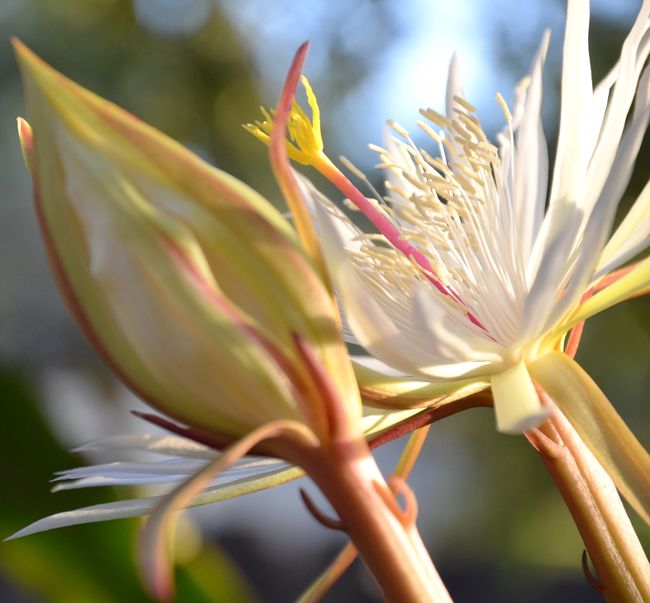
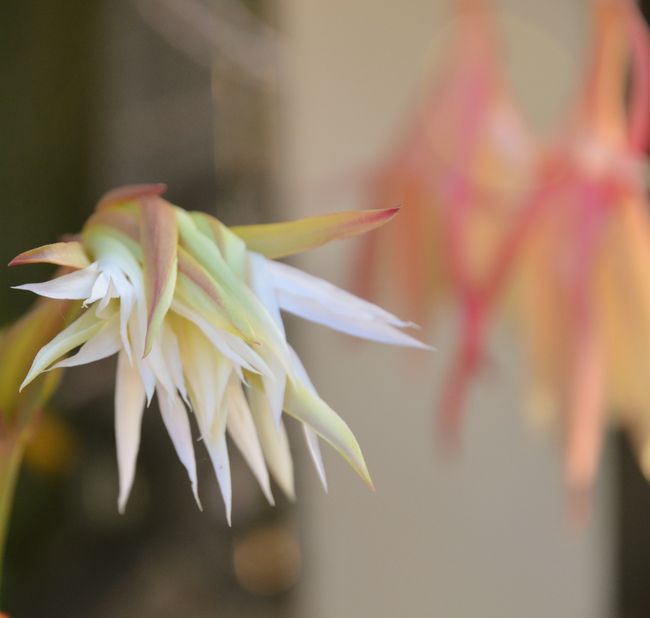
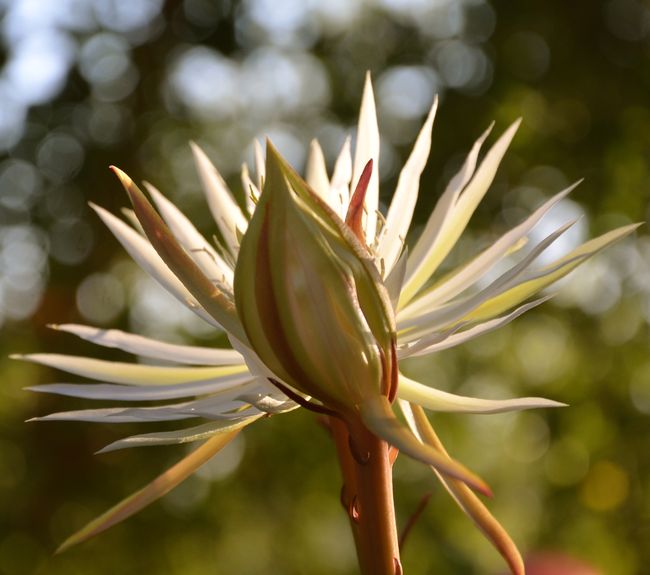
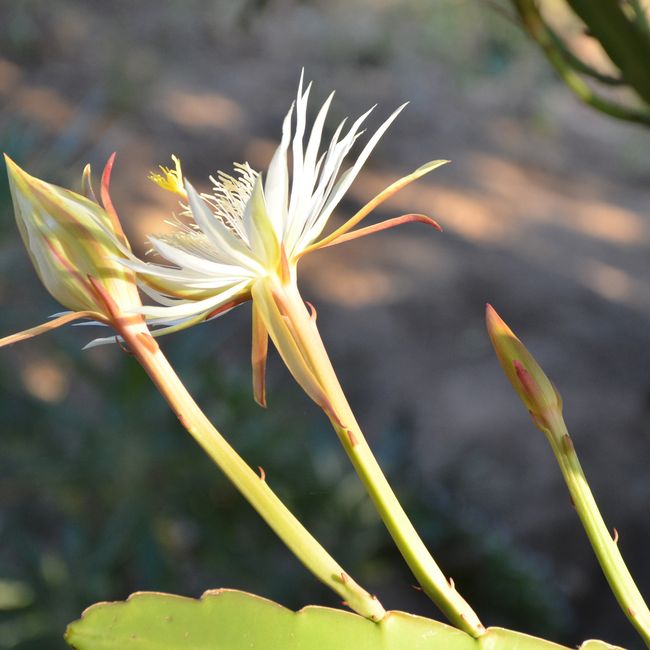
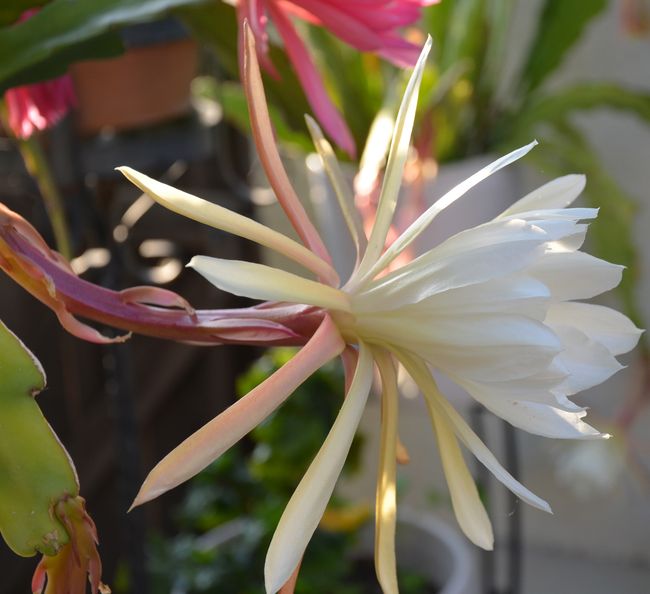








Actually since women do most of the work I guess I should stick with there is nothing made by man that can compare with nature.
With the exception of life there is nothing man can make that can compare to nature.
My totally non-scientific brain thinks I learned in school (prehistoric times) about plants needing blooms for their pollen (spors? seeds?) to look attractive for bees and other kinds of spreaders around. The Centennial plant often seen in Arizona only blooms for a day after growing for 100 years, and then dies… Like you I look at flowers with adoring eyes. Their beauty often makes my day!
Greetings,have not been here for sometime. Without a computer sure is no fun.hope you all are great.since I have not been here your blog is wonderful. Have a great day, Linda
Of course your question made the Science Gangsta in me curious, so I researched. In the wild, they are pollinated by bats and large moths. Which, of course, totally makes sense. Lovely photos. Here’s hoping a bat or two visits your garden in the dark of night.
shar thanks for sharing that book! i cant wait to check it out. so interesting…
Such a fascinating family of plants. I love Epis. Perhaps the scent is released in the cooler temps of evening? The heat of the day would probably dissipate the aroma. Pollinators? Why, it’s those Leprechans, silly goose!
Those epis are of the FFA variety, they like to burn the candle at both ends in one phamatasorgasmic night and slowly wilt away with the sun. Them’re party plants! As if you would have any wallflowers lining the dance floor at Moss Cottage. I don’t have any epis, but they are now on my A list.
I am not sure, but I do like the theory that they do so for the same reasons as we do. Or perhaps for just their own enjoyment. You never know with plants. They can be rather secretive on their mysteries.
Gorgeous. Oh one day to have a patio that doesn’t involve evil mosquitoes….
xoxo
Beautiful!
I love night blooming cereus. that exotic perfume and the luminosity of the flowers all brought back to mymind by your gorgeous photos.
Transported myself to a world of detail and was dazzled. You did a perfect job of capturing those precious 24 hours.
Tobacco plants (nicotiana, I think) like to share their scent at night.
White flowers attract moths, from what I remember of my horticultural training…so they would open at night when moths are about. Perhaps your night-scented epi is related (by smell?) to night-blooming jasmine.
Michael Pollen, The Botany of Desire, talks about plants making themselves attractive for much the same reasons we do.
The rare Mexican Bat Racoon. Have some Tequilla and you can see some too Missyyyyy
WOW! Gorgeous flowers and pictures. I think they may be trying to attract moths.
I bought some epi cuttings at the San Diego Wild Animal Park last year, stuck them in pots, and didn’t think they were going to do anything. Much to my delight, however, they have sprung little pink budlets from the sides! I have never had them before, so I can’t wait to see what they turn into. Yours are beautiful!
Stunning! Delightful! Thanks.